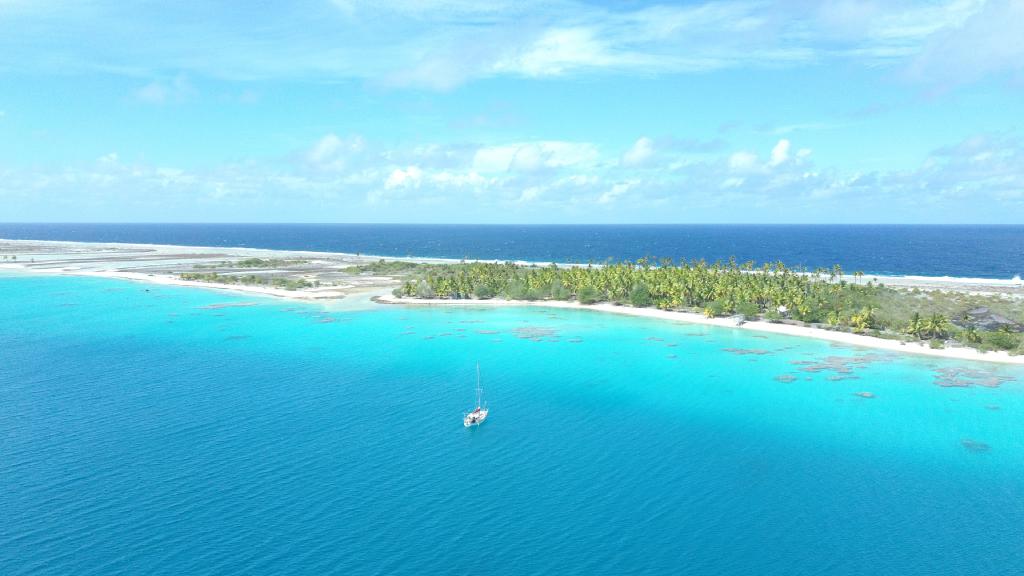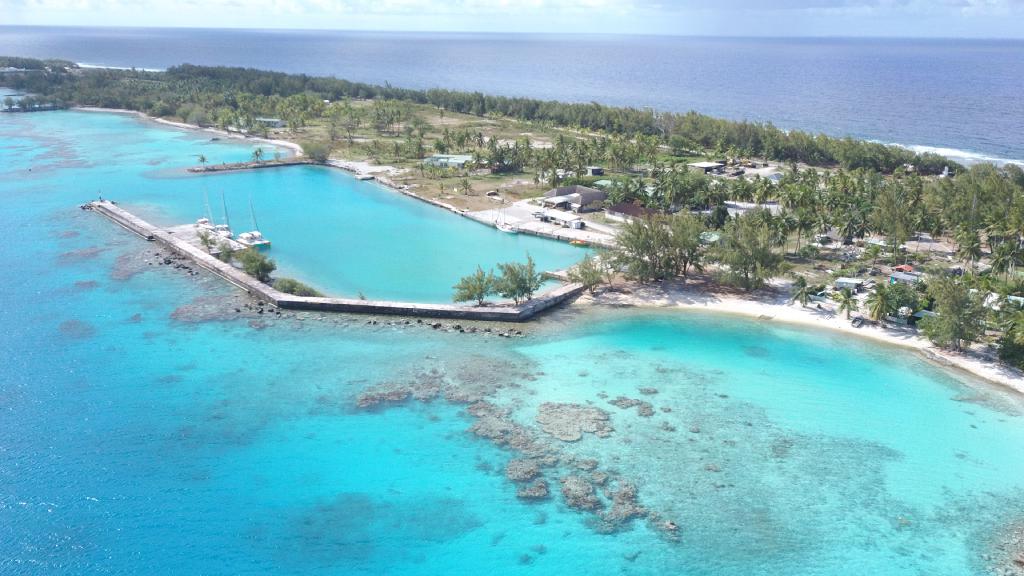Actually we wanted to stay on Hao only for a few days. First we stayed a little longer because we were waiting for spare parts (new consumer batteries). However, during the “waiting time” we got to know the island and the people of Hao a bit better and decided to stay a bit longer. Also it was of course the “Heiva” celebrations that made us stick (which were cancelled on many other islands, but took place here).
The atoll is huge. It extends over about 30nm (about 50km). We also visited some of the countless little motus, which are the islands on the atoll. We also got to know some locals and Polynesian culture. Not only did we learn how to bake coconut bread on the fire, how to make medicine with leaves from local trees and how to weave plates from palm leaves, but we also learned a lot about the local culture.
In the past the island was known for its military base from which the nuclear tests in Mururoa were planned and controlled. Now the military base no longer exists and has been mostly dismantled. Only a few things still remind us of it. One of them is, besides the “Darse”–a dock in which we have spent most of the time on Hao with our boat, especially the airport (HOI). The airport was built so that even large transport machines could bring the material for the tests. It is still in operation now for civil aviation purposes. It is unusually large for a small South Pacific island with less than 2000 inhabitants. The runway is 3343m × 45m and thus similar in size to the runway of an airport like in San Francisco SFO). At the time of the space shuttles it was even listed as a emergency landing site for the space shuttles (but it was never used for that purpose). In the 80s even the supersonic aircraft Concorde made a stop here. Currently there are regular services to Tahiti, but also some planes land here to just refuel when they fly to remote islands (e.g. Gambier).
The nuclear tests are certainly a rather dark chapter in the history of the region. Although there are reports that Hao is also contaminated with plutonium we could not measure increased radiation with our Geiger counter. We take this as a good sign, but our possibilities for analysis are very limited.
Overall, we liked Hao very much. It is perhaps not an island with many attractions and is also not very touristy. But maybe this is what makes the island so charming. Especially the friendliness of the inhabitants surprised us again and again. And in the end it was hard for us to leave our new friends.















































